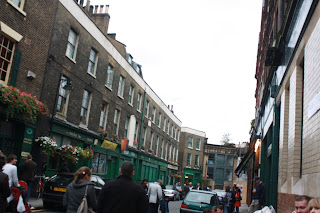
the question : look at photographs of most modern architecture and you will find nothing animate in it, on it or within it. we have the technology to make buildings and the environments within them into part of the active animate performance that is everyday life. how do we create architecture that is animate and part of a wider performance? is anthropomorphism in architecture a useful tool? how do we represent this type of idea? what metaphors can we use?
in the last five weeks of being in london, i have attempted to submerge myself in my new environment. i have been constantly wandering, and i gave up knowing exactly where i was going and how i was going to get there quite a long time ago. i stumbled around the city, making sense of places and their relationships to one another. due to the fact that i was exploring in this manner, i feel as though i have happened upon many places that i never would have found otherwise.
the city has so much to offer, how could i not take advantage of this?
people dont.
the place where the monotony of every day life is most apparent -- the london underground. i use it to get from point a to point b. every. single. day. i am underground and therefore, my relationship with the city is lost. i know my place in the city based on the tube map pasted all over each carriage, but it too has been simplified. i dont have to think.
why must we simplify everything to the point where it is beyond recognition?
i find my way out of and around each station, helplessly led by the signs directing me to my next location. i never have to slow down. i never have to pause. i too am consumed by the speed and efficiency that is the tube station.
northern line --> picadilly line --> victoria line --> hammersmith and city line --> way out -->
i need to break free from the pace and the stream. i need to find a way to show that there is more to the city of london than an endless existence of "stuck in a rut." there is more to life than hurry up and wait.
there is a different way out.































